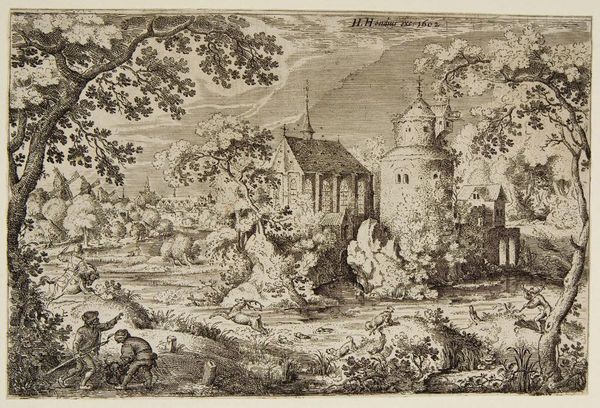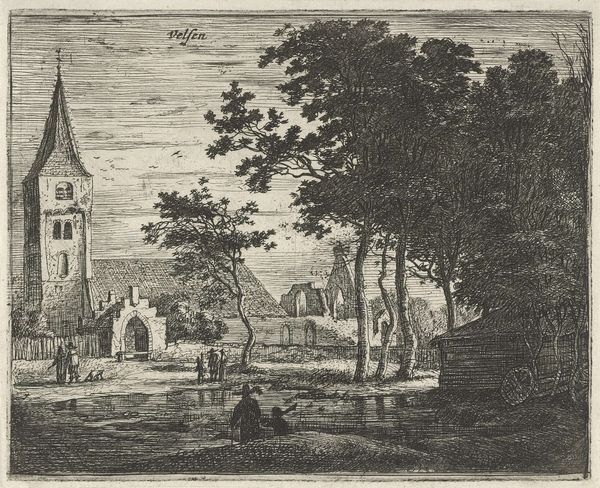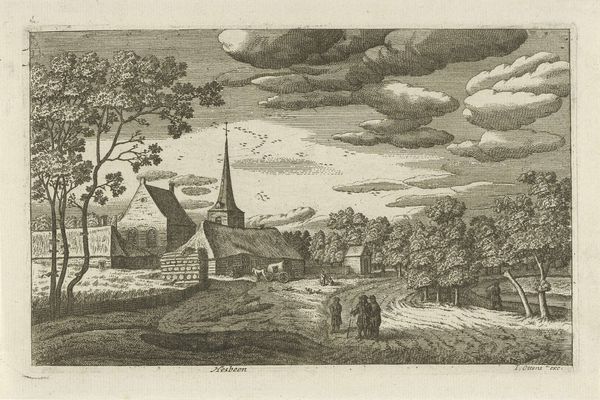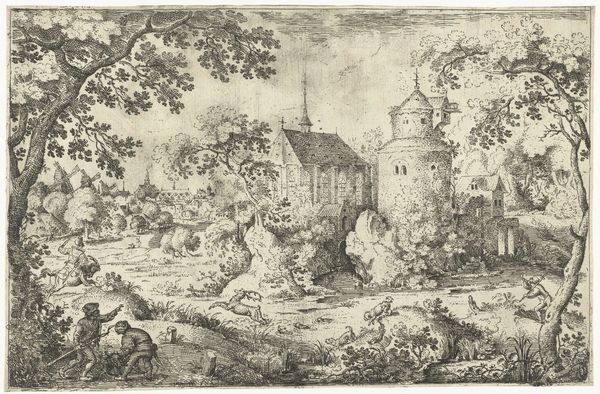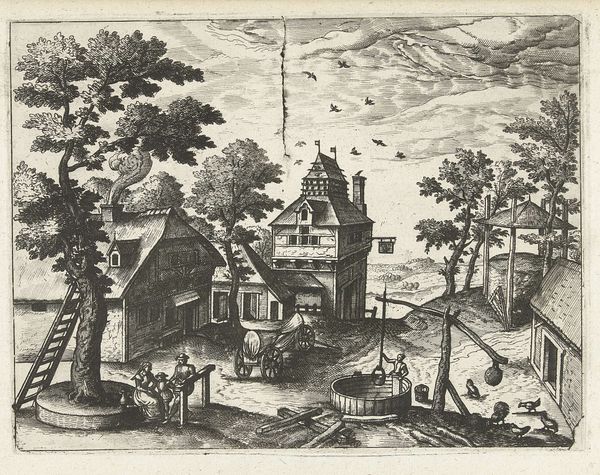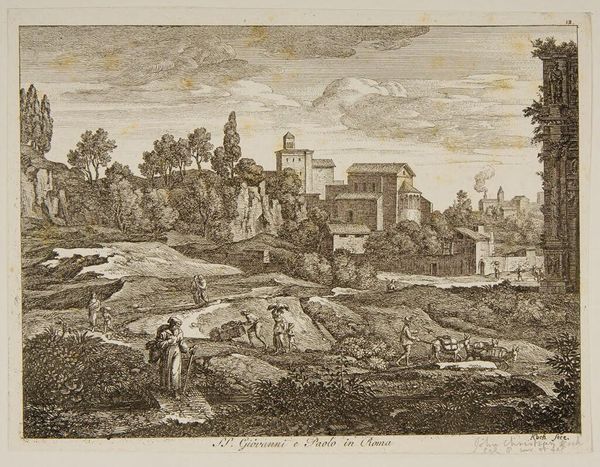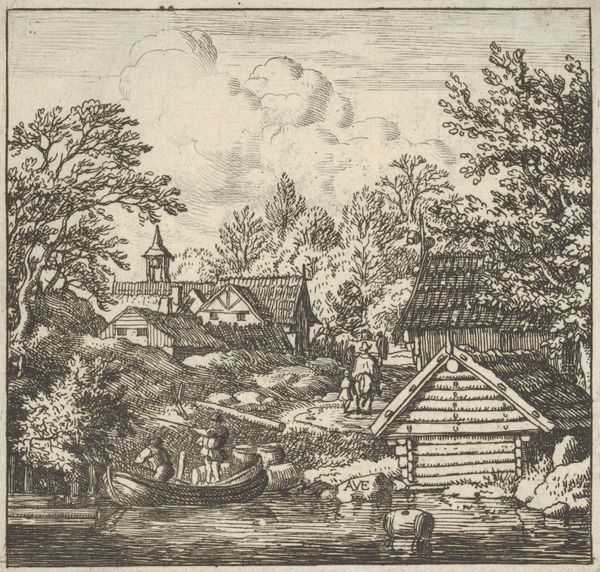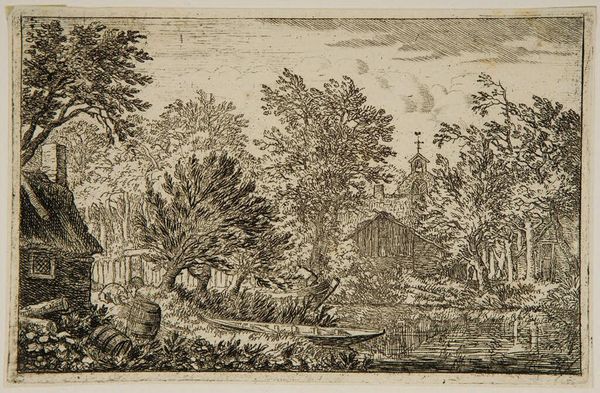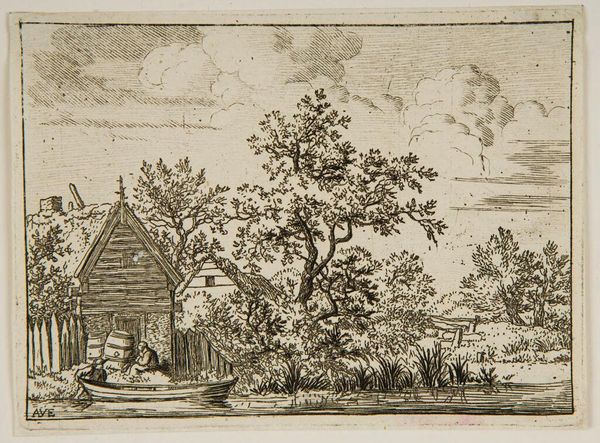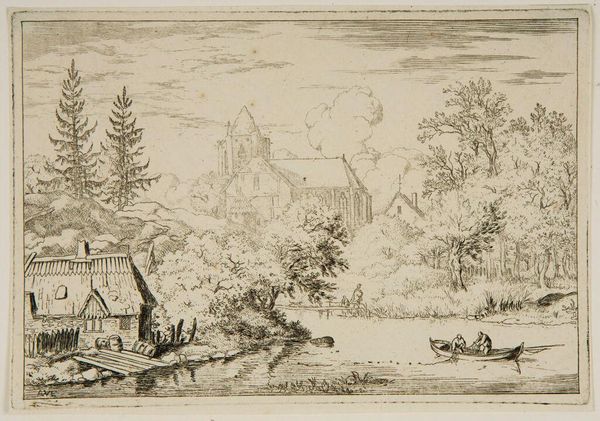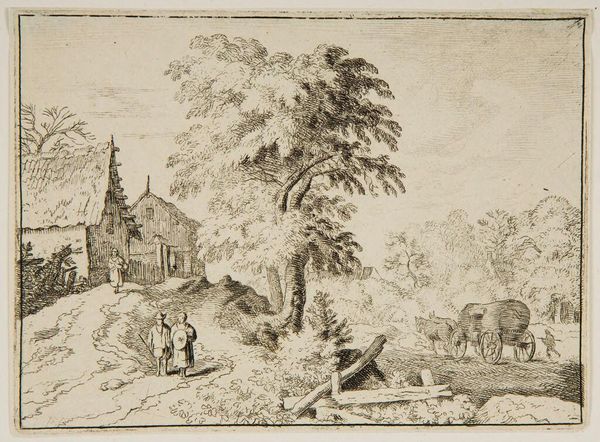
print, etching, ink, engraving
#
baroque
#
dutch-golden-age
# print
#
etching
#
landscape
#
ink
#
genre-painting
#
history-painting
#
northern-renaissance
#
engraving
Dimensions: height 195 mm, width 282 mm
Copyright: Rijks Museum: Open Domain
Curator: Let's turn our attention to "Deer Hunt near a Chapel," a print attributed to Jan van Londerseel, likely created sometime between 1602 and 1625. The work combines etching and engraving, techniques that allowed for relatively mass production and distribution of imagery. Editor: My first impression is that it has a rather idyllic yet also somewhat frantic feel, doesn't it? The meticulous details somehow make the implied action feel frenetic, all compacted within a small pictorial space. Curator: Exactly! The composition, packed with symbolism, is quite characteristic. We see, prominently, a chapel and what appears to be a fortified tower within a broad landscape. Religious iconography nestled right into the upper class recreational bloodsport. Editor: It's fascinating how these elements blend seemingly disparate aspects of life at the time. The very act of producing such a print – the materials, the engraver's labor, the potential for widespread consumption by different classes – challenges any simplistic notions of social hierarchies. Curator: Precisely. Notice, too, how the landscape itself, the rolling hills and scattered windmills, contribute to a sense of Northern European identity. This print becomes a vessel for cultural memory, linking piety, recreation, and place. Even the specific rendering of the deer—how would you analyze its form and placement in this landscape? Editor: Well, deer are age-old symbols of nature's bounty, linked to ideas about sovereignty, ritualized power... perhaps even sacrifice, especially here given their proximity to the chapel. Its body leads your eye from foreground to background as it escapes the human hunters and canines alike. The cyclicality of the image speaks to this unending struggle. Curator: This attention to the cycles of life can remind viewers of their relationship with resources and nature’s power. A printed image also functions in its time as one type of limited resource; made by and for someone. How many reproductions were produced? How was this image obtained and viewed? Editor: I’d argue this image, both through the act of making it, and through its symbolic representations is attempting to codify social order and give material substance to that way of life. Curator: Indeed. It shows how meaning isn't simply imposed on the viewer. The method itself becomes enmeshed within social meanings and visual tropes we often unconsciously reproduce and repeat. Editor: I see the visual layering and the use of recognizable symbols as tools in solidifying narratives we use to help constitute reality, whereas your emphasis lies more within the practical applications and constraints the image produces when materialized. A rich and thought-provoking work, regardless.
Comments
No comments
Be the first to comment and join the conversation on the ultimate creative platform.
